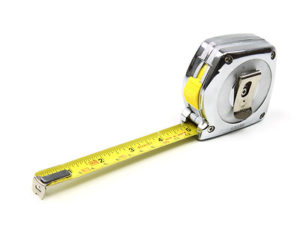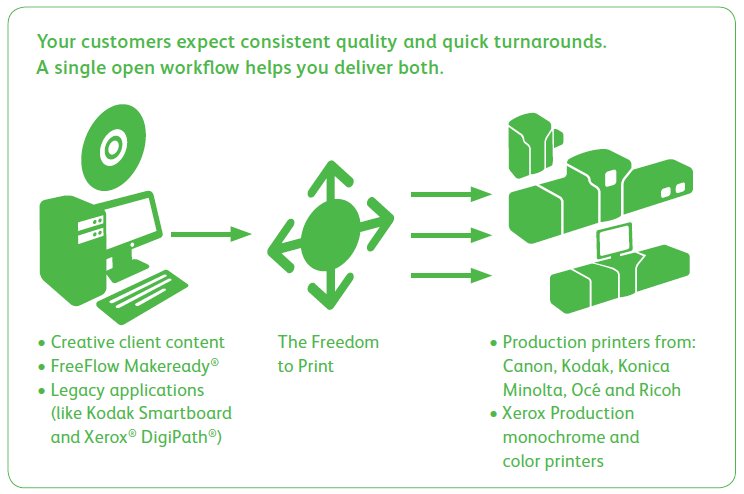Written by:
Howard Fenton
Senior Technology Consultant
NAPL
 I think that Joel did a great job with his three part blog series entitled “How do you measure the productivity of your digital press.” As someone who focuses on measurements in digital workflows, I search everywhere for good ideas about measuring the productivity of digital workflows and digital printing equipment.
I think that Joel did a great job with his three part blog series entitled “How do you measure the productivity of your digital press.” As someone who focuses on measurements in digital workflows, I search everywhere for good ideas about measuring the productivity of digital workflows and digital printing equipment.
As you may recall from a July blog, utilization rates is one measure I think is an important measure of productivity. Of all the possible metrics, I believe that utilization rates are the single best predictor of costs/page. When other concerns are the same (equipment, consumables, support) across different electrophotographic devices, we see that as utilization and page volumes increase, manufacturing costs decrease and vice versa. Part of this is the result of the sliding scale many resellers and manufacturers offer in which click costs or maintenance costs decline as volumes increase. Of course other contributors to costs/page are equipment costs, speed, consumable costs, equipment life and rework.
In the bigger picture, however, there are 4 components to productivity that I refer to as the 4 STEPs that determine productivity which are: Staff, Training, Equipment and Procedures. These 4 STEPs help determine the root causes of production issues and narrow down where to focus attention in order to overcome those issues. The key to assessing the 4 STEPs is measurements. Often described as performance-based metrics this includes figuring out what are good metrics, how to test the feasibility of a good metric, how to automate the measurement process and how to create incentives that motivate improvements.
I recently worked on an assignment in which the company wanted to focus on measurements and provide incentives to increase performance. This is easier in theory than to change in reality. In theory, the goal of performance-based metrics is simple – identify measurements that are accurate, make changes, and evaluate if the changes resulted in greater productivity.
But in reality this is difficult to implement because in companies that have never used metrics, this is more then just a simple change it requires a cultural change. Defining metrics and using metrics to reward performance is both a science and an art. It requires monitoring performance and offering rewards and checking if the incentive is simple and effective in increasing performance. The tricky part of creating metrics that work is making the measurement simple enough for everyone to understand, data collection must be easy and ultimately automated, and the reward must be considered worthwhile.
The move to metric-based performance is not one that should be taken lightly. I have seen many companies try to use it and fail. In my experience, it is as much planning and showmanship as it is project management. Here is how I approach this type of assignment. First, it requires planning and a focus on staff buy-in and then early wins to reinforce the buy-in. I always recommend choosing an easy goal to achieve that will provide an immediate incentive. For example, you could tell staff that every time there is a reduction in overtime that you will give them $20. The first time they achieve the goal you walk around and hand out crisp new $20 bills and say thank you.
These changes require time and an emphasis on the “what’s in it for me” benefit to staff. In other words, the staff has to see benefits – not punishments – associated with measurements. If staff are punished based on data collection then they will undermine or sabotage the measurement process.
The shift to performance-based metrics is deceptively tough. Not just because of finding an accurate measurement and automating the measuring process but because it is threatening and requires monitoring and vigilance. Without spending time achieving the staffs buy-in, it is often doomed to fail. I have seen staff fight and even sabotage the process.
What’s your experience? Have you made the shift to performance-based metrics? If the answer is yes, how did you get the staff buy-in?
Interested in similar topics? You may want to check out:
- Overall Equipment Efficiency (OEE)
- The Pros and Cons of the Sales Per Employee Ratio
- How do you measure the productivity of your digital press? (Part 1)
- How do you measure the productivity of your digital press? (Part 2)
- How do you measure the productivity of your digital press? (Part 3)
_____
Howard Fenton is a Senior Technology Consultant at NAPL. Howie advises commercial printers, in-plants, and manufacturers on workflow management, operations, digital services, and customer research. He is a paid contributor to this blog.


